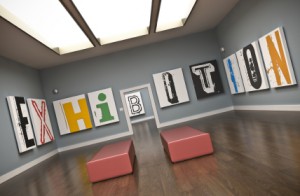Check out a story about our very successful client, Brendan O’Connell…
The art world is a world of business; really big business. According to a recent segment on 60 Minutes, the market for this art has outperformed the Standard & Poor’s list of 500 common stocks since 2003. Just as art is your passion, art is also your work. Many artists don’t like to concern themselves with the business aspect, but if art is your work. It is also your business. It’s important to remember that creating your art is only step one. This is when marketing, PR and media relations need to become part of the picture.
As a good investment, art is bigger than ever. Elite art buyers – many from Russia and China — are so ravenous that in the last year alone, the contemporary art market raked in over $5 billion in auction sales.
Just as art is your passion, art is also your work. Many artists don’t like to concern themselves with the business aspect, but if art is your work. It is also your business. It’s important to remember that creating your art is only step one. In order for your work to become a successful business, you now need to master the art of connecting with your audience, which means it’s time to learn the art of storytelling. And now, marketing, PR, and media relations enter the picture, no pun intended.
Particularly when it comes to the world of fine art, too many artists and galleries get lost in discussing the specifics that are of interest only to those involved in the art world. This mistake is not dissimilar to a physician who talks to patients the same way he would speak to a medical peer. That type of communication is specialized, it is field specific and it generally only works to alienate the public.
Always keep your target audience in mind; remember who your customers are. If you are targeting art aficionados, fine, use art jargon and art facts, but if you are targeting the general public, beware. This is particularly true of those who work in or own art galleries. Often by trying to impress, they end up intimidating a prospective buyer. Someone might be interested in a particular piece, but by making obscure references that only art insiders will understand, that person ends up intimidated and uncomfortable. Generally that person will find a quick way to exit and leave -and another one bites the dust. If that person had been made to feel comfortable and welcomed, if the discussion was about the look and feel of the work, about how and why the work was created, perhaps a story or two about the artist, the opening to the sale would be there.
The same holds true when telling your story to the public and the media. Effective public relations is effective story telling. Never lose sight of that. People don’t want cold facts or jargon. They want to be engaged, and stories engage. You’ll want to come up with one overall story and then drill down and find stories that meet the needs of different media outlets. These stories might be about your art, your journey, your experiences, or your influences. Make a list of possible stories for example, how and why you became an artist, how you developed your particular style, new projects, shows or exhibits, awards and honors, collaborations with other artists, etc.
Different stories will resonate with different media outlets, so know who your market is, learn which media outlets target those markets, study the media, read or watch, the websites they visit, etc. Define your message, your market and develop stories and media angles that resonate with your audience. Launch an effective story-based, PR campaign and you’ll build a bridge between your art and your customers. Next time 60 minutes does an art story, you can be the example they use.
Copyright © Anthony Mora 2012

